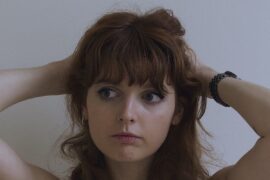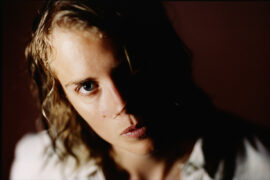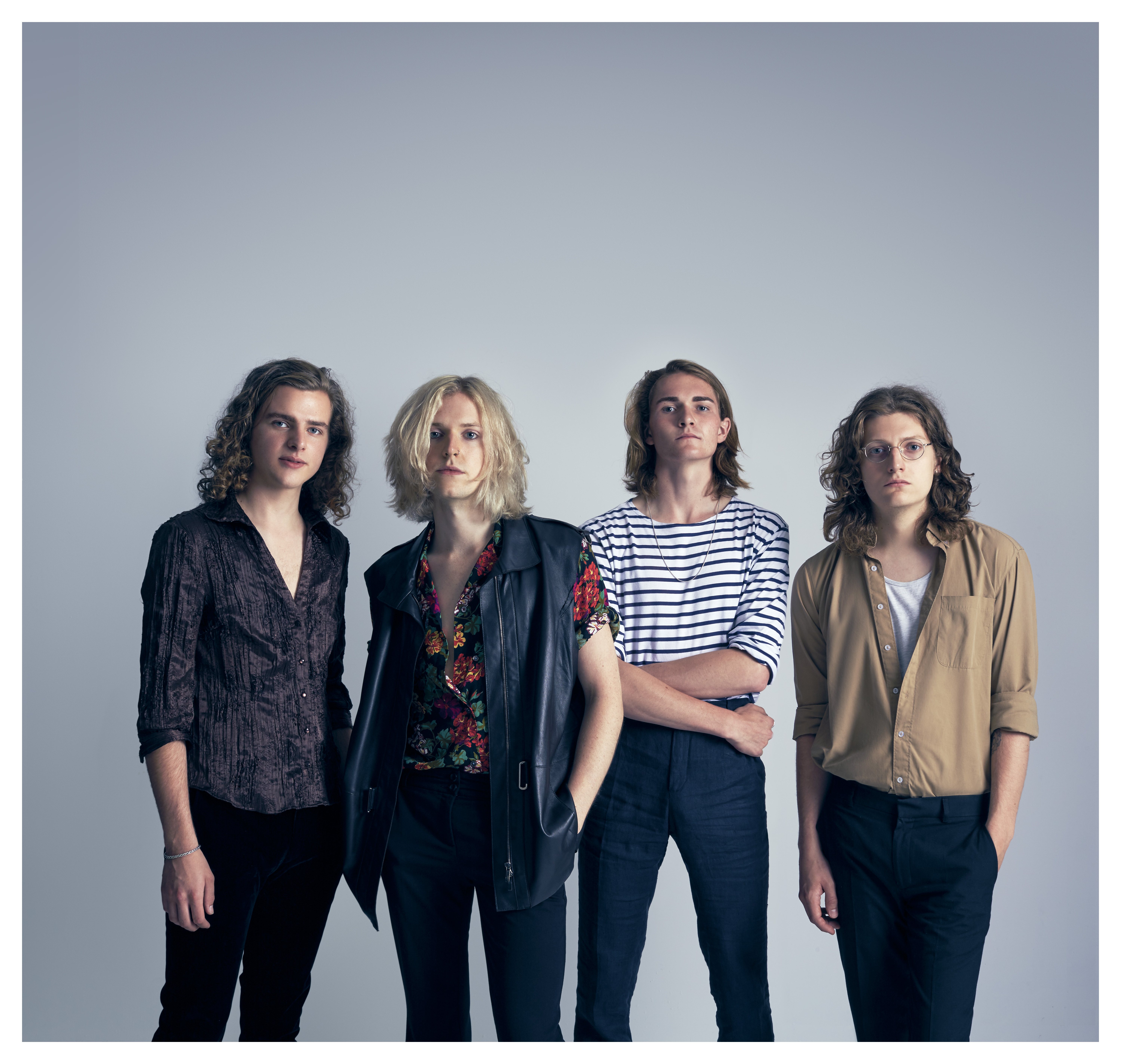Blood red sheets sweep across like a storm. Her body tenses. Her eyes may look concerned, but her confident stance and bold, piercing gaze screams courage. The camera backs up into an extreme long shot as the poised dancer gradually moves towards us in her breathtaking red dress and pointe shoes. Through dance movements and camera movements, we engage in an intimate conversation with the dancer. This is the power of screen dance.
“Lost in Motion II” is a short, beautiful dance film produced in 2012, recently featured at Dance for Camera 2014 (Co-hosted by Dance Film Association and the Film Society of Lincoln Center). This short dance film was produced as a sequel to the widely popular “Lost in Motion,” a successful collaboration between director, Ben Shirinian and choreographer, Guillaume Côté. Clearly, the first short did something right because after its premiere at the Toronto International Film Festival in 2011, it went on to be nominated for “Best Experimental Film” at the Miami Short Film Festival and for “Best Editing” at AICE Awards.
The film features Heather Ogden from The National Ballet of Canada elegantly dancing on a cliff. The movements of the body and choreography of the camera take us on a journey of her inner thoughts. They reveal a story and present us with a paradox as we experience the dancer as both majestic and human. We feel a sense of isolation, subtle pain, and vulnerability when we move in with close up shots and witness the more intricate expressions of her upper body. We are then distanced by extreme long shots of the hauntingly stunning landscape, in which the dancer becomes elusive, almost untouchable with grander, full-body movements.
The dancer uses a dynamic blend of adagio and port de bras (sustained movements with extensions of the limbs), interrupted by grande allégro (giant leaps and quicker steps). Jon Devries edits the monochromatic background of greys to create drama. To heighten this drama, the director chose to use Leonard Cohen’s version of “Avalanche” – revealing moods of darkness and mystery juxtaposed with expressions of purity and beauty. Though the dancer is painted as majestic and untouchable, vivid illustrations of her emotions make us feel a sense of familiarity and closeness to her.
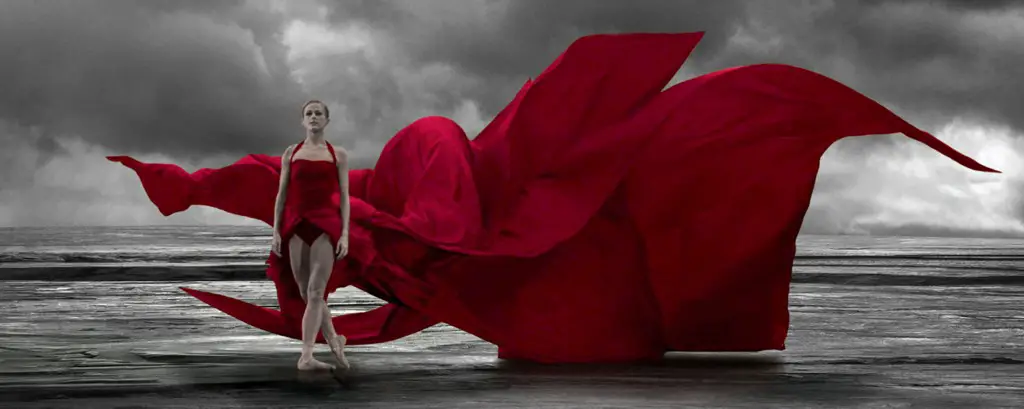
The experience of screen dance differs from that of live performances. Instead of viewing all that occurs on a traditional stage from a single, frontal view, screen dance allows the director to choose what and where to focus our attention. On camera, despite being more physically distant form the dancer, we feel more intimate with the experience because a dancer is given depth, personality, and perspective. We get a deeper look into the minds of the director and the dancer through the movement of the camera. The director enjoys the benefits of a 360 degree view of the space, the use of point of view shots or following shots, and the ability to move closer to or further away from the subject. Through this form, dance is no longer just a performance or a means of reaching out to an audience. It becomes a conversation between audience and performer.
Dance and film each have their own techniques for conveying meaning, including choreographic form, cinematography, editing, and countless others. But put together, the forms invent new vocabulary and techniques of creating intention. Movement can be explored in locations outside of the traditional theater and through new mediums of art, greatly expanding the limits of dance.
Although screen dance seems to be a small community right now, this medium has much greater potential. It could eventually open up more doors for future artists in exploring daring, new ways to create and express. The digital form also spreads dance far more quickly across the globe, which could greatly support and expand the arts community. Screen dance is an exciting new realm that reimagines dance and film, but it will definitely need much more support and exploration. If you are interested, you can get involved and learn more by looking into some of the links below!
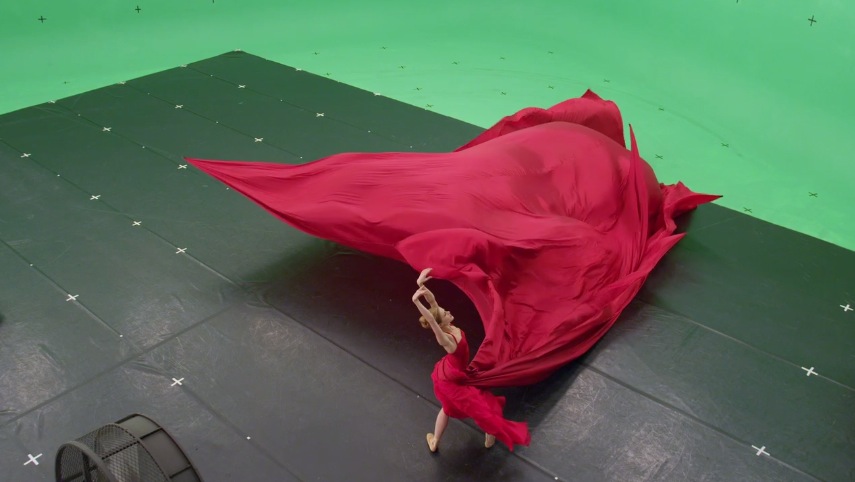
Here are a few leading organizations that would be great resources:
Dance Film Association (Based in New York City)
Dance Camera West (Based in Southern California)
San Francisco Dance Film Festival (Based in Northern California)
Jumping Frames (Based in Hong Kong, but focuses on films all over Asia)
Raindance Film Festival (Based in England)


